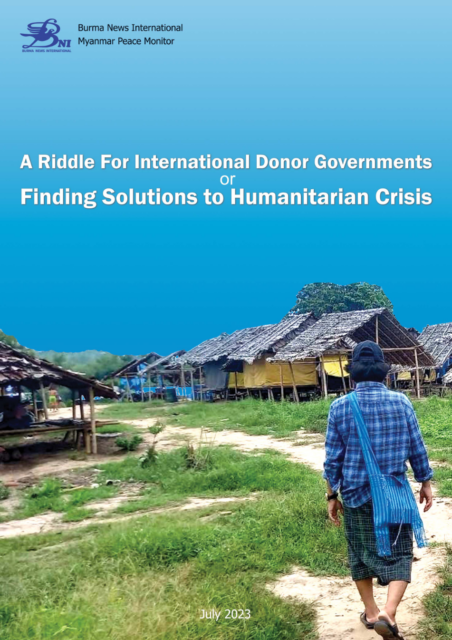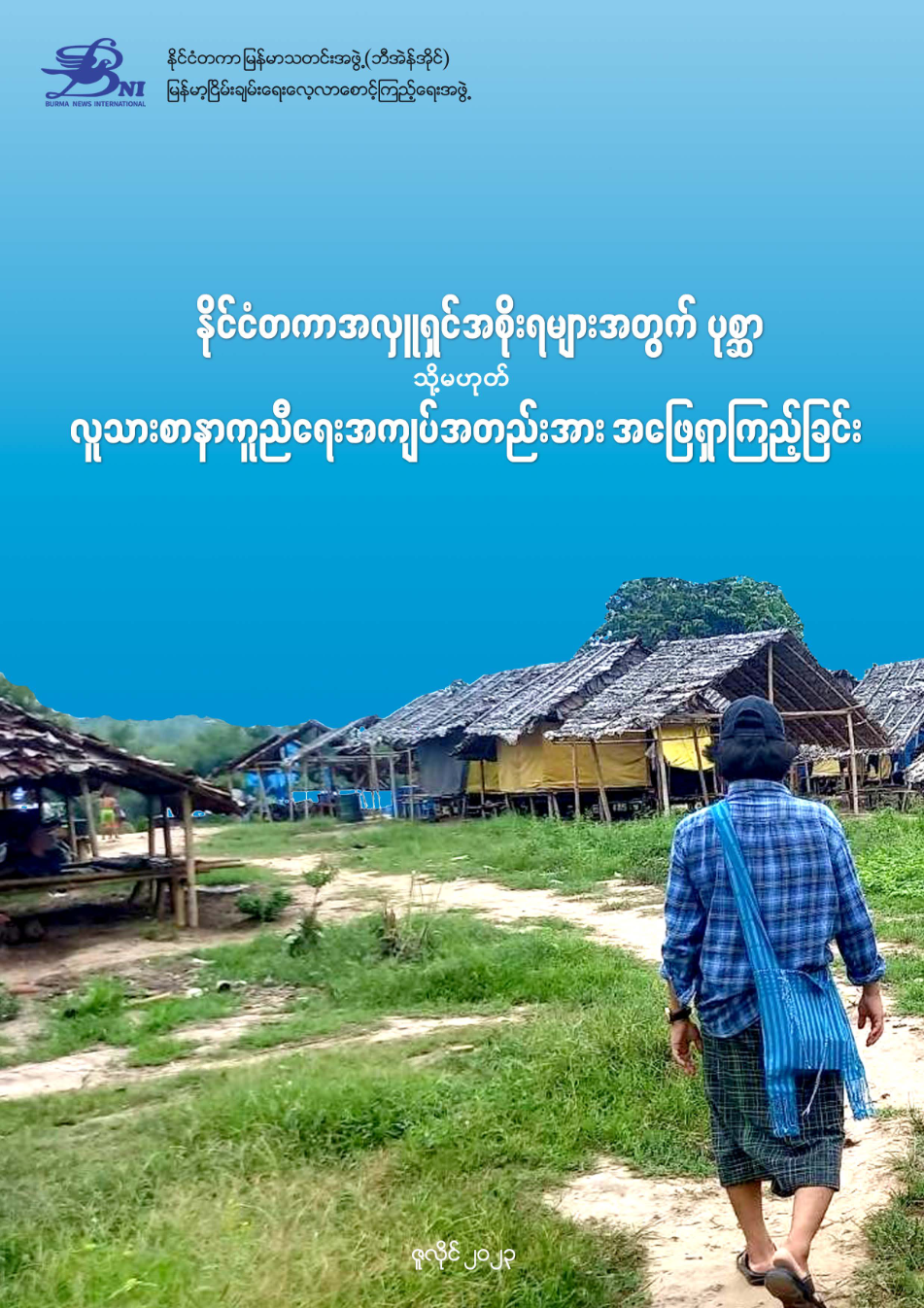A Riddle for International Donor Governments or Finding Solutions to Humanitarian Crisis



This paper attempts to review actions and approaches of the UN agencies and ASEAN, which are managing humanitarian aid for the people of Myanmar contributed by international governments. It is necessary to question how effective the method of cooperation with the coup group has been in managing the delivery of humanitarian aid to the people of Myanmar who have faced the military coup since1 February 2021. It is high time for all UN member states to find ways to bypass difficult situations in which aid delivery is unlikely without the junta’s approval.
During more than 2 years of military coup attempt in Myanmar, there are 1.5 million civilians who have fled their homes due to fighting and insecurity. If this is added to already-existing IDPs, the total number of IDPs has reached 1.8 million according to the UNOCHA’s report released on 6 May 2023.
Humanitarian operations continue to be hampered by physical and administrative obstacles,” the report says.
According to the BNI – Myanmar Peace Monitor’s record till 9 May, there were 2,770 days of clashes in Myanmar since the coup, and the number of clashes may be higher than that. More than 98 percent of the clashes are between the EROs, the People’s Defense Forces/Local Defense Forces (PDFs/LDFs) and troops of the military council, and the PDFs/
LDFs account for 68 percent of it. During the military coup, the momentum of the people’s resistance and revolutionary war became more apparent.
As a result of the coup, civil war has become widespread and millions of people had to flee their homes. Based on possible responses within a challenging access and funding environment, the UN’s response plan targeted only 4.5 million Myanmar people by 2023, with a decrease of nearly two million aid recipients in Myanmar compared to 2022.3 It can be said that only the people of Myanmar suffered the consequences of cooperation only with the junta made by international humanitarian aid organizations and UN agencies which signed memorandums of understanding (MoUs) with it.
International humanitarian aid organizations and UN agencies have failed to find new ways to ensure access to humanitarian aid for the people of Myanmar amid the difficulties and challenges created by the military council’s tighter restrictions and regional security conditions.
Now, the people of Myanmar who are really in need of help across the country have to rely only on people-to-people contributions. The National Unity Government (NUG), the EROs and the spring resistance forces are providing aid through regional networks. According to a list by the Ministry of Humanitarian Affairs and Disaster Management (MOHADM) under the NUG, it received a fund of 6.6 billion-MMK donated from 16 April 2021 to 31 March 2023. The NUG provides emergency aid to more than 200,000 people every month.
“Funding comes from the people-to-people contributions. More than 90 percent are from the people of Myanmar inside and outside the country. Especially Myanmar expats help a lot”, Union Minister for Humanitarian Affairs and Disaster Management Dr. Win Myat Aye said.
In order to maintain power, the junta burned down the villages in townships which are not under its control. A total of 60,459 civilian houses were burned down by the military council across the country.5 The military council carries out targeted airstrikes from religious buildings, schools, IDP camps to towns, villages and civilians every day. Since the coup till
9 May 2023, the military council carried out airstrikes for 404 days. The number of airstrikes may be thousands, and most of them targeted civilians.
Due to the targeted attacks on civilians by the military coup and escalation of internal conflicts, the number of people who have lost their homes and fled their homes is increasing day by day. Consequently, the need for humanitarian assistance is growing. Due to the military council’s restrictions, humanitarian aid from international governments for the
Myanmar people remains out of reach for those who really need help.
Therefore, on 30 May 2022, the MOHADM under the NUG, the Karenni National Progressive Party (KNPP), the Karen National Union (KNU) and the Chin National Front (CNF) issued a joint statement on humanitarian support to Myanmar proposed by the ASEAN and UN.
The joint statement called for increasing support for credible local Civil Society Organizations/Community-Based Organizations (CSOs/CBOs) and NGOs for the emergency relief from of the suffering of the people of Myanmar and, providing support to credible local and international actors already involved in humanitarian support in ethnic and liberated
areas. The statement also called for organising cross-border clearance or facilitation of cross-border movements for the long-term benefits of hundreds of thousands of displaced people.
It is time for ASEAN, the United Nations and international donor governments to review the source and direction of the humanitarian aid they provide to the people of Myanmar. The legitimacy of the military council should be reviewed, and ways of delivering humanitarian aid to the people freely and independently sought.
This research paper studies whether the approaches of UN agencies and ASEAN which manage international humanitarian aid contributed by foreign governments are working or not and seek ways to deliver humanitarian aid to the people of Myanmar who really need help.
It provides approximate answers to the research questions such as the areas in Myanmar most in need of aid, where the civil war is accelerating, difficulties and challenges of “people-to-people” sharing and supporting and the measures to avoid targeted attacks by the junta.

